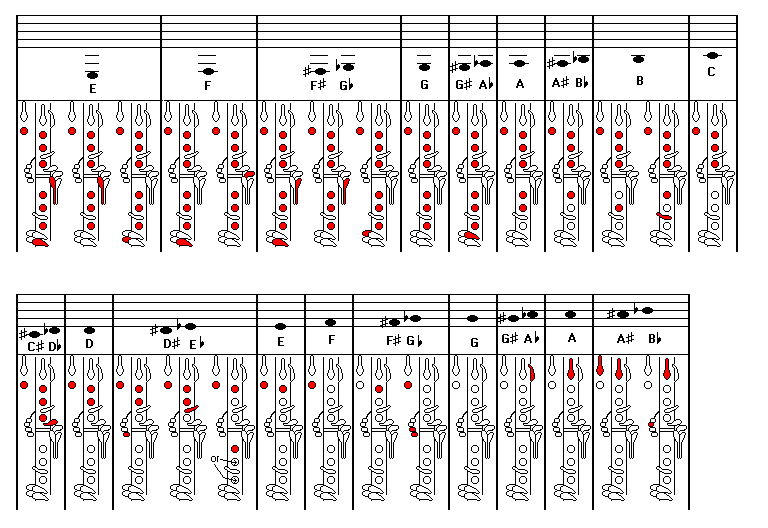

If you play a basic scale on a B♭ clarinet, it will sound as a B♭ scale in concert pitch. The most common type of clarinet is in B♭ (the example above assumed the clarinet was in B♭), but they also come in E♭, A, and other keys. That’s because clarinets come in different keys. If you played a certain scale on one clarinet, then did the exact same thing (the same movement of your fingers) on another type of clarinet, you’d still get the same type of scale, but it would be in a different key. There are many different types of clarinet, and though they use the same fingerings, the resulting pitches are different depending on the instrument. (And others! Wikipedia has a long list of transposing instruments.) Why do transposing instruments exist? Why would musicians invent something so confusing? It’s because, in fact, this system makes things easier for clarinetists. The clarinet is a transposing instrument, which means the pitch in the notation is different than the concert pitch. The piano is a non-transposing instrument, which means the pitch in the notation is exactly the same as the pitch you hear (the concert pitch). The audience hears a B flat, which is the “ concert pitch.” The clarinet thinks of it as a C, the pianist thinks of it as B flat. In plain English: the clarinet’s C natural sounds exactly like the piano’s B flat. then the pitch of the resulting sound will be the same as if a pianist performed this: Here’s a quick primer.Ī transposing instrument is an instrument whose music is notated at a pitch different from the pitch that actually sounds (source: Wikipedia article).įor example, if a clarinetist performs the following notation.


If you’re an amateur musician - say, a guitarist or pianist who just plays for fun - you might not have come across this somewhat-confusing concept. Today we’ve launched some nice features for transposing instruments, such as clarinets and various horn instruments.


 0 kommentar(er)
0 kommentar(er)
